
SHAH ALAM: Luxembourg takes delivery of its Airbus A400M airlifter on October 7. The aircraft will be jointly operated by Luxembourg and Belgium as part of a binational unit, says Airbus. The release below.
The Luxembourg Armed Forces have taken delivery of its Airbus A400M military transport aircraft, which was accepted at the A400M Final Assembly Line in Seville (Spain) and has performed a ferry flight. It will make a first stop in Luxembourg before continuing its journey to the 15th Wing Air Transport in Melsbroek (Belgium), where the joint airlift unit between Belgium and Luxembourg will be based. With this delivery, Luxembourg becomes the seventh A400M operator.

The aircraft, known as MSN104, will be operated by the Luxembourg Armed Forces and Belgium within a binational unit, together with the seven A400M ordered by Belgium, which is due to receive its first aircraft in the coming weeks.
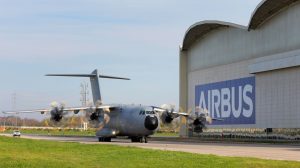
Alberto Gutierrez, Head of Military Aircraft at Airbus Defence and Space, said: “I welcome Luxembourg to the growing A400M user community. With 94 aircraft in service, the A400M is increasingly becoming the air mobility backbone of our customers, both in civil and military environments, as seen in recent COVID-19 crisis missions around the globe.”
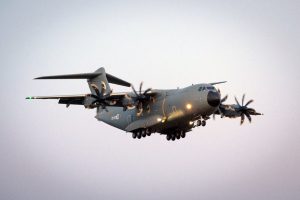
The A400M recently achieved additional capabilities such as simultaneous paratrooper dispatch for a maximum of 116 paratroopers using the side doors, automatic low level flight in visual meteorological conditions (the only military transport aircraft with this capability), and aerial delivery and combat off-load that allows a single 16-tonne load to be dropped automatically via parachute extraction.
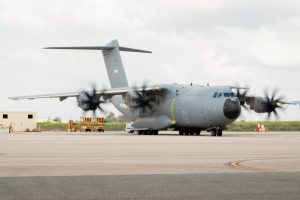
In addition, 25 tonnes can be gravity dropped and the manual combat offload of up to 19 tonnes on pallets (one pass) or 25 tonnes (two passes) on an unpaved runway is possible, which is unprecedented. With regards to helicopter air-to-air refuelling operations, the A400M recently achieved the first successful wet contacts with a H225M helicopter.
— Malaysian Defence


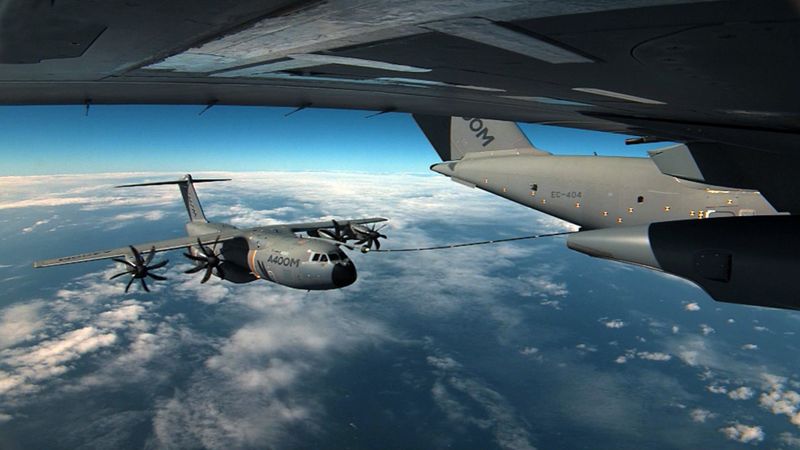
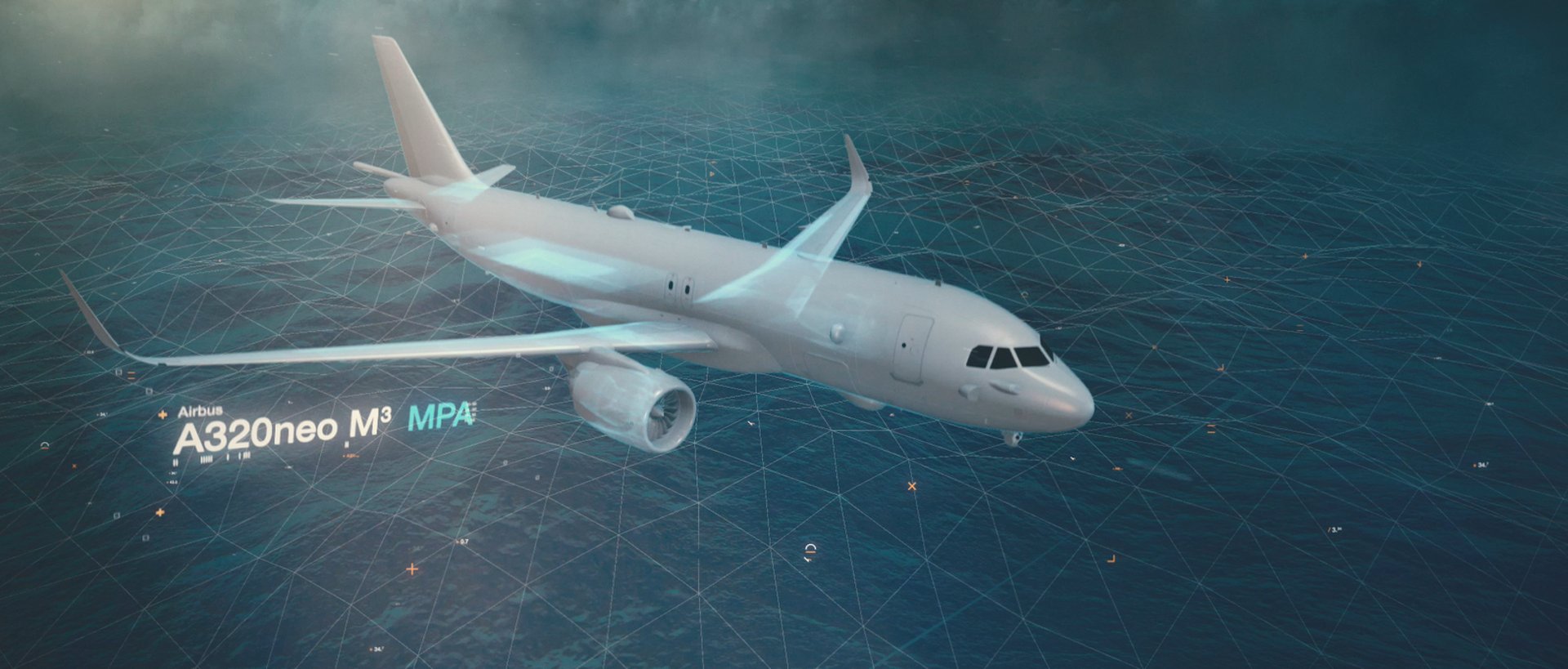
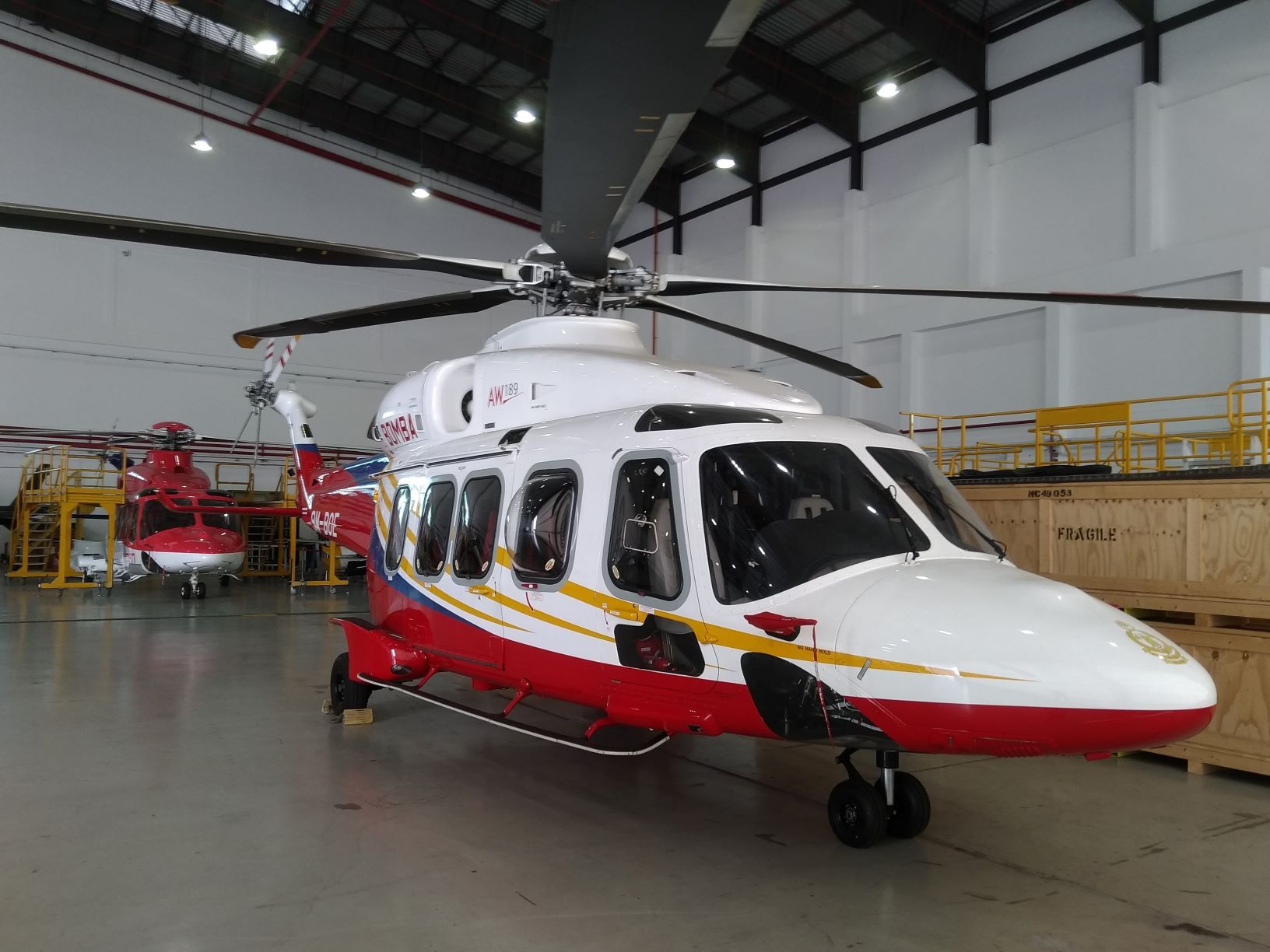
Is our A400Ms now ‘complete’ or are there more pending updates from Airbus in the pipeline?
Reply
Whenever there is an update on the A400M Airbus will be glad to put it on our aircraft, ASAP, its simply good marketing. Will they announce each and every update? Unlikely unless its something that can be easily publicised for example AAR on helicopters. That will need new AAR refueling pods and even the installation of the proper equipment on RMAF Cougars which is fitted for but not equipped with the refueling probe. It’s not a priority for RMAF, really so I don’t think we can expect such things soon.
I see. I’m just wondering if our A400M are still missing anything from the spec that we bought, ie the refueling probe which we got the update after receiving the planes.
Reply
The refueling probe has always been fitted from the start
“always been fitted from the start”
Ahh sorry I might be mistaken on what ‘missing’ but I was referring to this:
“ability to refuel other aircraft and receiving fuel in flight”
https://www.malaysiandefence.com/first-a400m-in-seville-for-upgrading/
Just wonder if there are anymore upgrades we yet to receive from Airbus.
Any plans to replace the C-130 with these? I feel it’s redundant to have 2 planes doing more or less the same roles…
Reply
For the moment none, as for the future who knows
@ ASM
” Any plans to replace the C-130 with these? ”
We don’t have the budget to totally replace our C-130H with A400M. But in the near future, IMO we should at least try to get 2 more A400M to increase our fleet to 6. For now countries like Spain, Germany and UK are trying to offload their A400M commitments, as they think their order is more than what they currently need. We could offer to buy their current A400Ms at cheaper than brand new prices so that they can take in their future A400M buying commitments.
IMO we are at least 20 years away from the need to really replace our C-130s. So what can replace them then, I have no idea now what would be the need at that time.
OOT
Any updates on the LG1 arty? Supposedly all 18 should be delivered to TDM by this year.
Off topic
Still no news of the MD530G?
Anyway some news on the Eurocopter Tiger replacement in Australia
http://www.flightglobal.com/helicopters/resurgent-tiger-fights-for-survival-in-australian-arh-competition/140432.article
Looks highly likely that Australia will be retiring their Tigers starting 2026. Will PUTD getting them around 2030 a good idea or a waste of money? It does have a unique engine that is not used by anyone, and reportedly high maintenance costs. I would say just skip them. But I still hope we could have a look at the just retired Australian Army S-70A9 Blackhawks.
If the Kuwait gov if feel hesitated to let go his Hornet perhaps The Finnish Hornet will do…..
Finish FA 18 is the best solution. What is RMAF doing?
Finnish hornets?
If you can wait to 2030
http://www.defmin.fi/en/administrative_branch/strategic_capability_projects/hx_fighter_program/hx_fighter_program
ASM – “Any plans to replace the C-130 with these”
Remains to be seen. It’s a decision that doesn’t have to be made for quite a while given our ‘H’s still have lots of hours left.
ASM – “ feel it’s redundant to have 2 planes doing more or less the same roles…
The question really is whether standardising to a single fleet of A400Ms in the future will work for us. Prior to the A400Ms being ordered we had no issues with the C-130s and didn’t even need a slightly larger platform.
For me it’s about practicality and utility; some air arms have a greater need compared to others for a platform the size of a A-400M. For others the capabilities provided by the C-130 is sufficient.
… – “ Will PUTD getting them around 2030 a good idea or a waste of money”
Several issues come into play.
– Will whatever issues the Aussies faced with then; which led to the decision to retire them prematurely also be an issue for us?
– In several years time the Tigers will have got older. It’s a well known and undisputed fact that as airframes get older they tend to get more expensive to run. Will this be an issue for us? As it stands even brand new; the Tigers, like all contemporary stuff which has a higher level of automation/electronics are expensive to run; even.
– When all things are taken into account; (e.g. age, performance, maintenance/support costs, actual requirements, doctrine, etc) in a few years time will it make sense to go for the retired Tigers or something else?
Too many variables involved which the politicians and army have to decide on; when or rather if the time comes. It’s also hoped that when or if we get the capability; we can fully deploy it in conjunction with other assets, be it UASs or whatever: all linked and sharing a common picture.
We can safely say that roles they will perform will include armed recce, flank protection, CAS, etc but other capabilities like directing arty/MLRS operating from from the decks of RMN ships should also be conducted.
The problem is with the politician always mess up with the defense equipment purchasing and not the MAF…
@fadiman
Is not that Kuwait is hesitant, but they need to get their SHs up and running before retiring the legacy Hornets.
Getting Finnish Hornets is a bad idea as Finnish AF intents to use up their airframe lifespan up to 2030 unlike the Kuwaiti ones which still has plenty of life left. The main reason why the Canadians aren’t targeting Finnish examples but looking closely on the Kuwaiti ones.
” Will whatever issues the Aussies faced with then; which led to the decision to retire them prematurely also be an issue for us? ”
One of the reason is that they want more helicopters (29 rather than the current 22). so it means a type other than the tiger as the tiger production run has ended.
_______________
” When all things are taken into account; (e.g. age, performance, maintenance/support costs, actual requirements, doctrine, etc) in a few years time will it make sense to go for the retired Tigers or something else? ”
IMO the question is in 10 years time does something like the tiger can survive and give a meaningful capability to our warfighting efforts? Would the same budget better be used to get loitering munitions instead to attack armoured vehicles and other targets as what we see recently in Nagorno-Kharabakh?
more on Finland
US has approved super hornets, growlers and lightnings for finland.
– 58 E/F Super Hornets and 14 G Growlers for USD14.7 billion
– 64 F-35A Lightnings for USD12.5 billion
Also Canada is not going to add anymore legacy hornets.
… – “IMO the question is in 10 years time does something like the tiger can survive and give a meaningful capability to our warfighting efforts”
Despite whatever advances in technology, including a improved AA and other systems; there are in 10 years I think it’s safe to that there will still be a role of the manned rotary platform.
What will change will be how they’re employed and the other assets/systems they work with; e.g. attack helis working in parallel with UASs (either as a “wingman” or carrying certain sensors, etc).
One capability (new or not) doesn’t necessarily do away with the need for another. “Loitering” munitions have been around in some form or another for quite a while now. Granted they will get “smarter” in the coming years and will proliferate but I would think attack helicopters and loitering munitions will be ideal for different types of operational circumstances (types of targets, their “depth, the nature of the conflict, etc) and that we’d still have a need for both.
The successful deployment of both will still be dependent on “networking”; how we control and coordinate our assets; how we go about funding targets and how we ensure that each asset we have is able to be used to its maximum potential.
@fadiman
“mess up with the defense equipment purchasing and not the MAF”
The ATM also bears some blame. Knowing that we don’t have unlimited money to spend on defence yet they continue to insist we had to buy everything new and many had to be gold-plated to suit their particular preferences.
When the Government had decided to get used M109s rather than new Caesars, TDM sulked and did their best to cancel the deal. Now we don’t see any idea to move forward on SPH other than TDM insist we must buy new Caesars.
So what next?
@ Fadiman
” So what next? ”
My suggestion. Not the best plan out there as just an idea from a single civilian causal observer. Still something that would greatly improve TUDM overall capability by 2030 within a budget that can be afforded by our government, something covering all issues from Nuri retirement, MPA, LCA/LIFT, QRA, SF support, AWACS to Electronic Attack capability.
https://www.malaysiandefence.com/options-for-rmaf-cap-55/
@fadiman
What’s next is to firstly gain back lost capability gap. 1) That is to fulfill the chopper function lost with the retirement of Nuris, and 2) the fast jet capability lost with the retirement of Fulcrums.
1) We can start filling that with used Blackhawks from Brunei and transferring VIP Blackhawks for utility use. Then steadily built up the fleet with new civvie S-70i off the production line.
2) We can gain back some of the lost Fulcrum role in a few years time by getting Kuwaiti Hornets to bolster our Hornet fleet. We can consider also getting their C version for interception role.
3) For future we have to get AWACS/AEW&C, which I suggest go for used E-2C Hawkeye that had been recently retired by USN.
All these 3 are capabilities we can get at relatively low cost as most would be used but still good condition, and more importantly we can get them within just a few years time if we start now.
Reply
Joe, I have written many times before that the VIP Black Hawks can only be turned into utility helicopters after an expensive upgrade so it is a no go
off topic
More sources of secondhand Blackhawk helicopters to be available in the near future. Could as the koreans to include these as offset to a big defence deal with them.
http://www.defensenews.com/global/asia-pacific/2020/10/09/south-korea-to-replace-black-hawks-with-homemade-surion-helos-says-lawmaker/
….
This is what you were talking about.
“The Nagorno-Karabakh conflict is ushering in a new age of warfare” (Al Jazeera)
Fadiman,
It’s the job of the armed services to list our their requirements and the responsibility of the government to notify the armed services what can be afforded and when funding can actually be allocated. This often doesn’t happen. Not only that but at times the government can change priorities based on unsound reasons – equipment which has been approved and registered for purchase can be delayed indefinitely and can be changed at short notice by the politicians.
If the government insists on certain purchases; then it’s the job of the armed services to conduct a feasibility study as to how suitable it is, commonality/support issues and how much something will cost to operate for the duration of its service life. At times the government listens: at times it doesn’t. The armed services are extremely careful about getting
something and later on encountering issues related to
spares and operating costs – no point getting something cheap (whether new or pre owned) to achieve short term costs savings only to have to end up paying more in the long run.
It also doesn’t help that we have a deeply flawed and self defeating policy in place; aimed at “national interests” (i.e. under the pretext and myth of “self sufficiency” and improving the local industry) rather than ensuring taxpayers cash is put to the best/optimum use by enabling the MAF to get the capability it needs.
Something is terribly wrong with our system when the Kedah and other cockups are allowed to happen and when we fail to learn from our mistakes by repeating other cockups (wasting what limited funds we have) like the LCSs and Little Birds.
@ azlan
” This is what you were talking about ”
It is all about sensors and situational awareness, of which the suicide drones is an integral part of that capability.
If situational awareness and hard kill of things like MBTs can be done with unmanned systems, there is less reason for a manned one like attack helicopters to be around. Yes we still need helicopters to transport people and logistics, but for flying dangerous missions over the battlefield, even if it is probably something that is still relevant, something that we probably can do without.
The last few weeks got me thinking, should we replace the equipment of a few of our RAD close support regiments (or even just some batteries within the current RAD pack howitzer regiment), from the current pack howitzers to something like the CM-501XA loitering munitions and CM-501GA missiles.
I am really interested in the capability that the CM-501GA and CM501XA missiles can give to our Littoral Mission Ship and artillery regiments.
This was recently held by TUDM.
So what was the conclusion done from this seminar?
http://mobile.twitter.com/airforcenextgen/status/1314388018254368768
Another recent seminar that would be interesting to know about the conclusions gained.
http://mobile.twitter.com/airforcenextgen/status/1311630088568414208
Are our C 130s currently undergoing depot level maintenance ? Have not seen one flying for the last 4 months or so despite living close to Subang airport , along the regular flight path of the C 130s.
Rep
They are flying every day, AFAIK, saw one flying circuit over Subang last week, most likely out of maintenance
“so it is a no go”
I see. I apologise if I missed your writeup article on that.
IMHO we should still seek for other used Blackhawks of relative vintage and usage as the Brunei ones, if possible. One that we should look out for is the remaining airframe lifespan, as relifeing can be very expensive and whatever used we buy should avoid such expenses.
… – “It is all about sensors and situational awareness”
It’s about that sensors:systems which improve SA but are also wholly dependent on integration, coordination and ensuring everything fits in the right place.
The current conflict offers amid a glimpse as to how warfare is evolving but doesn’t really show anything new is in that a lot of the stuff used (whether “loitering” systems or UASs used at an operational and tactical level) has already seen usage in previous conflicts.
Also take note the circumstances encountered in this conflict : it hasn’t erupted into a full scale war with both sides utilising all their resources and it’s a semi static war with both sides not making any rapid advances. In a war in which fast moving ops are the norm; the use of UASs and “loitering” munitions; as well as coordination, targeting and other things become much more complicated.
… – “but for flying dangerous missions over the battlefield, even if it is probably something that is still relevant, something that we probably can do without.”
Like I pointed out in my previous list; I really doubt that “loitering” munitions will do away with the need for a manned rotary attack capability. Both are good at slightly different things under different operational circumstances.
… – “The last few weeks got me thinking, should we replace the equipment of a few of our RAD close support regiments (or even just some batteries within the current RAD pack howitzer regiment”
If anything we should add the capability whilst still maintaining and in fact; expanding our arty capability. Munitions which have longer legs and which are smarter supplement traditional arty; not does away or reduce the need for it.
For us (like for many others) the problem is not in getting the hardware but the “enablers” for which successful use of the hardware is so dependent on.
Red Baron,
Some could be deployed elsewhere; some at AIROD and some undergoing squadron level checks/maintenance.
… – “om the current pack howitzers to something like the CM-501XA loitering munitions and CM-501GA missiles”
First of all we have too few Pack Howitzers and 155mm guns in relation to the number of combat units we have. The number of Model 56s we have and the fact that we have/had ‘x’ is a throwback to the time when internal security was our main concern and when we only desired a limited or minimal
external defence capability.
Secondly when it comes to counter battery and interdiction the Pack Howitzers don’t cut it because of their limited “maximum effective” range.
Even if we got “smart” missiles and munitions; they would be good at different things in different circumstances. Just like how our arty and MLRSs are used in different circumstances; being good for different things; both complementing each other; e.g. “loitering” munitions employed in fluid time sensitive situations against targets of a tactical nature and missiles/MLRS hitting targets in the enemy’s operational depth beyond the range of arty (assuming we have the target acquisition capabilities in place).
… – “ something that we probably can do without.”
Yes to an extent. All depends on us not being in a position where unfortunately for us we have a dire need for something but alas don’t have it.
Take the LCAs; for routine peacetime roles they are great. For a low intensity situation they are also great but in a full scale state on state conflict in which the opposing side has MRCAs; our LCAs won’t cut it. Sure; on paper our MRCAs are supposed to be used against opposing MRCAs but things don’t always go to plan.
A argument can also be made that MRCAs/LCAs; as well as arty, MLRSs, UASs and missiles can on paper do a few of the things a attack helicopter can but to me this still doesn’t totally do with the eventual need for on (when it comes to delivering close and highly accurate fire in direct support of manoeuvre units orhrr things): even though it’s not, should not and won’t be a priority for a long time to come.
Appreciate the feedback re C130 sightings. Thank you guys.
@ azlan
” If anything we should add the capability whilst still maintaining and in fact; expanding our arty capability. Munitions which have longer legs and which are smarter supplement traditional arty; not does away or reduce the need for it. For us (like for many others) the problem is not in getting the hardware but the “enablers” for which successful use of the hardware is so dependent on. ”
I thought that you think that pack howitzers are no longer needed, and I did explicitly say a few 105mm pack howitzer regiments (not 155mm regiments), not all. We currently have a total of 7 105mm regiments.
The beauty of loitering munitions is that it is also an “enabler” with its build in EO system.
I am looking at
2x towed AH4/AHS4 155mm regiments (one each at east and west malaysia)
1x SH15 SPH 155mm regiment (supporting 3 Division Mechanised)
2x CM-501GA and CM-501XA regiments (one each at east and west malaysia)
6x LG1 105mm regiment (1x 1Div, 2x 2Div, 1x 3Div, 1x 5Div, 1x 10PARA)
with Rocket brigade of 2 Astros and 1 NSM regiments
and a ISTAR brigade of 1 Weapon Locator Radar and 2 Fulmar UAV regiments
Plus GAPU units.
____________________________________________
” Take the LCAs; for routine peacetime roles they are great. For a low intensity situation they are also great but in a full scale state on state conflict in which the opposing side has MRCAs; our LCAs won’t cut it ”
Full scale state on state conflicts we have our MKMs still. For daily taskings we dont have enough fighters with affordable operating costs to do daily taskings on both east and west malaysia. We are not a rich country that can buy and fly a fleet of fully MRCA fighters. LCAs in a state on state conflict will do point defence and counter cruise missile taskings. On things other than that, like a lahad datu take 2, LCAs are more than capable to be tasked for things like that.
… – “I thought that you think that pack howitzers are no longer needed”
Their short legs make them unsuitable for a lot of things needed. My previous statement was in reference to your suggestion or question on whether we should reduce their numbers and in turn get missiles
and “loitering” munitions as a better alternative.
Whether it’s 155mm or 105mm guns (which you see a need for) we need to expand their numbers as what we have in relation to combat units is inadequate and is based from a period when our requirements were different …
… – “.Full scale state on state conflicts we have our MKMs still. For daily taskings we dont have enough fighters with affordable operating costs to do daily taskings on both east and west malaysia. We are not a rich country that can buy and fly a fleet of fully MRCA fighters”
I merely pointed out that – “All depends on us not being in a position where unfortunately for us we have a dire need for something but alas don’t have it”
So let’s put things in perspective and in the proper context. My mention of MRCAs and they fact that we don’t have enough of them was to highlight the fact that they might be misused. I didn’t imply that we are rich or that we could afford an all MRCA fleet …
I also didn’t imply we have no need or shouldn’t get LCAs ….
It was also in reference to the fact that having “loitering” munitions and missiles means they supplement other stuff.
… – “The beauty of loitering munitions is that it is also an “enabler” with its build in EO system.”
Still dependent like everything else on having certain pre requisites met and more useful for certain tries of conflicts. They do not do away with the need for other assets as each asset will be good for different things. Yes there is place for then but having them supplements and doesn’t do away with the need for other, existing capabilities ….
… – “. LCAs in a state on state conflict will do point defence and counter cruise missile taskings”
On paper …. In reality if things got tough we’d be forced to use what we have irrespective of whether they’re not suited.
… – “hat pack howitzers are no longer needed, and I did explicitly say a few 105mm pack howitzer regiments (not 155mm regiments), not all. We currently have a total of 7 105mm regiments”
Indeed you did “specifically” say that; just as I “specifically” pointed out what we actually have is insufficient in terms of numbers ;(in relation to the number of combat units we have) and that (previously mentioned) what we have on paper and what we actually have are 2 different things. I’m also aware that your suggestion applied to part of the current set up and “not all”.
On the TUDM medium lift helicopter capability.
Still would like to know the outcome of this
http://pbs.twimg.com/media/Ej2k5IiVgAADemi.jpg
Anyway did some window shopping on the net. There are still quite a number of available EC225LP for sale worldwide, excluding the 5 still in the hands of MHS Aviation aka Boustead. Prices for them are still low. Quite a number of them are in SAR configuration (with utility interior, rescue winch and FLIR turret attachments, very closely similar to our EC725 configuration) and 1 example even has Level IIIa Ballistic Protection Flooring (aka bulletproof floors) installed! Just a no brainer to buy these helicopters (which is still cheap now) to beef up the current fleet of 12 EC725 and as a partial replacement of the Nuri capability. With advanced flight systems, the EC225LP is much more capable that the Nuris ever had.
off topic
Bangladesh just got 7 additional K8
http://www.dhakatribune.com/bangladesh/nation/2020/10/15/7-newly-procured-aircraft-for-baf-arrive-in-chittagong
looks like a one to one replacement of the L-39. so total K8 now to around 15 aircraft.
BAF training flow
basic CJ-6 to basic jet K8 to LIFT Yak-130, then OCU on FT-7